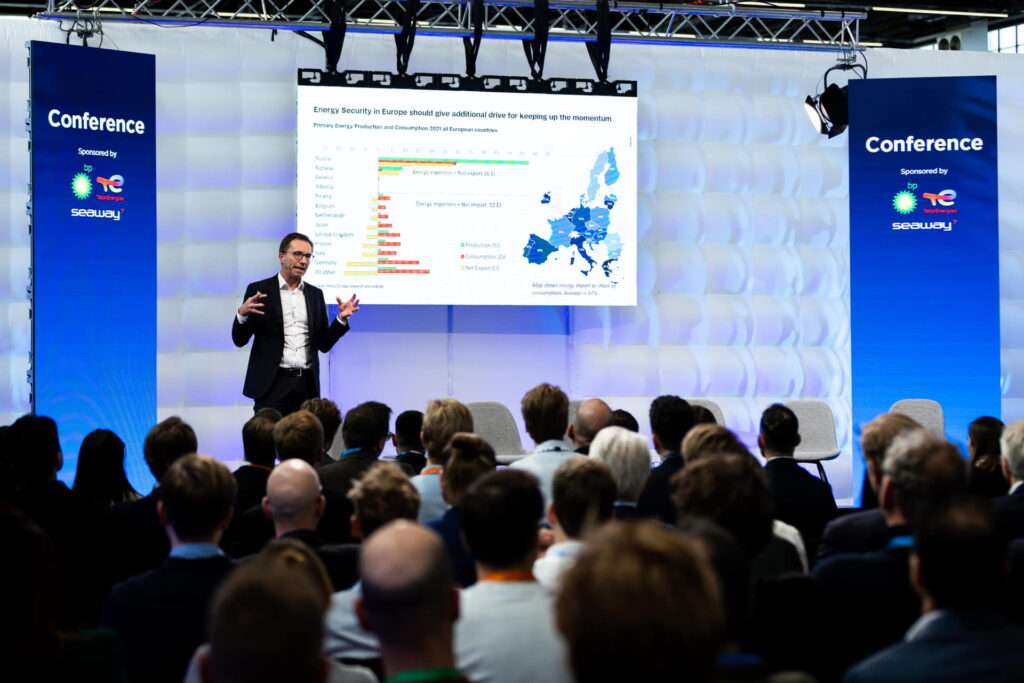With just over five years until 2030, renewable energy targets are becoming increasingly urgent. Success or failure in reaching these targets largely hinges on the efforts of policymakers and the energy industry.

By the end of 2023, the EU increased its 2030 renewable energy target to 42.5%, encouraging a 45% aim. The US is targeting 80% renewable generation by 2030. China, still primarily reliant on fossil fuels, accelerated its renewable initiatives and achieved its 1,200 GW wind and solar target for 2030 six years early, in July 2024.
Offshore Energy
Wind energy dominates the offshore renewable sector due to its ability to generate substantial capacity away from land. Floating wind technology is advancing, providing various market opportunities, including projects aimed at decarbonizing offshore oil and gas assets.
“Floating wind turbines offer more options to solve the puzzle of achieving a fast energy transition in the coming years,” stated Axelle Viré, Professor at TU Delft. Viré will speak at the Floating Wind session during the Offshore Energy Exhibition & Conference (OEEC) in Amsterdam.
Wave and tidal energy projects are growing, though at a slower pace than wind, and floating solar is emerging as an addition to offshore wind farms. The marine energy industry is increasingly active.
Renewable energy also plays a crucial role in hydrogen and clean fuel production, linking multiple industries that were once isolated. Carbon capture and storage (CCS) and decarbonization technologies further support global efforts to meet the Paris Agreement goals.
Moving Parts
Governments worldwide are developing systems to support new energy technologies and simplify permitting processes. New tender rules aim to enhance natural benefits through project design.
Efforts to accelerate offshore wind farm deployment, alongside other renewable projects, have been propelled by clean energy goals amid slow permitting processes.
The offshore wind supply chain faces challenges as projects and turbine sizes grow. The entry of floating wind, necessitating in-port maintenance, may stretch existing vessels and ports to their limits. Industry and governments are collaborating to meet national renewable objectives, particularly through cross-border port initiatives.
Working in Harmony
“Port logistics is an important part of the equation to reduce the LCOE. We will take our responsibility, and recognize that this is not possible without cross-border collaboration,” stated Tommy Sandtorv, Chief Commercial Officer at Karmsund Port Authority. Sandtorv will join the Floating Wind session at OEEC 2024.
Other session panelists include Richard den Hollander of Seaway7 and James Young of JDR Cable Systems, offering insights from offshore construction and subsea power cable perspectives.
“As we move towards a future powered by renewable energy, every offshore wind farm, substation, and cable becomes a crucial part of the larger energy puzzle,” said Saskia Jaarsma, Head of Offshore Development at TenneT. Jaarsma will also participate in the Grids & Interconnectors session.
The OEEC 2024, with its theme of Harmony, will showcase collaboration across energy sectors. Sessions will include topics like tender innovations and CCS.
“Carbon capture and storage (CCS) is vital to the UK reaching net zero by 2050. The NSTA has a significant role in realizing the UK’s CCS potential,” said Alistair Macfarlane, Manager at the North Sea Transition Authority, participating in the CCS session.
The Stage will offer insights into offshore energy developments, featuring speakers like David Molenaar, former CEO at Siemens Gamesa, and Manon van Beek, CEO at TenneT.
Offshore Energy Exhibition & Conference will convene in Amsterdam at the RAI Amsterdam convention center on November 26-27, 2024, gathering offshore energy industry stakeholders.
Original Story at www.offshorewind.biz
